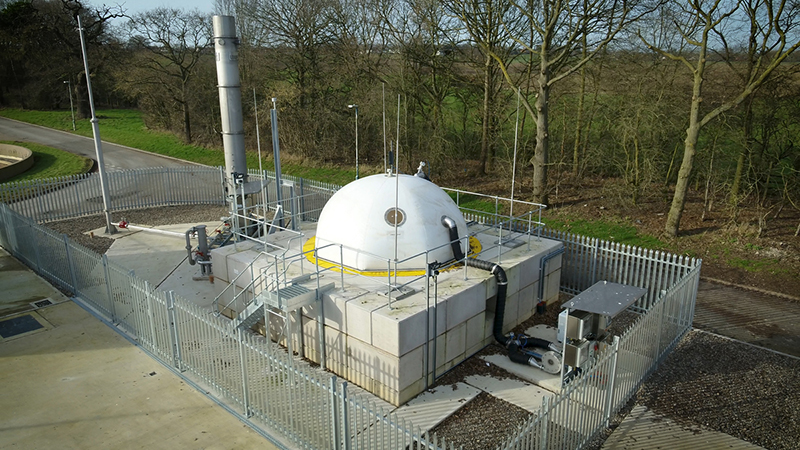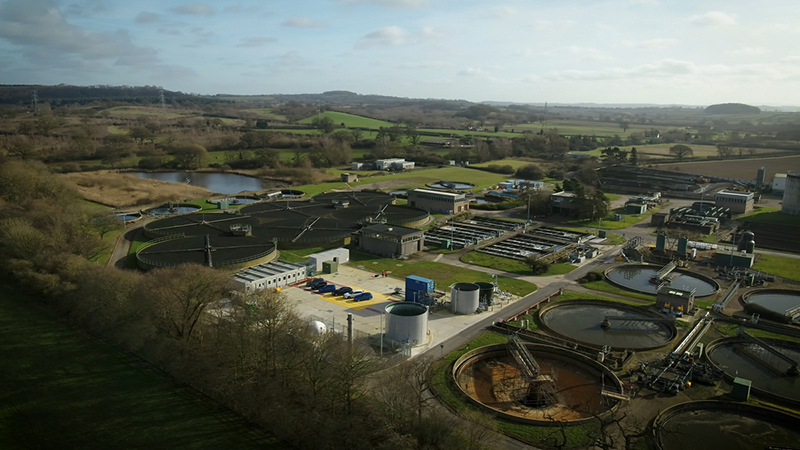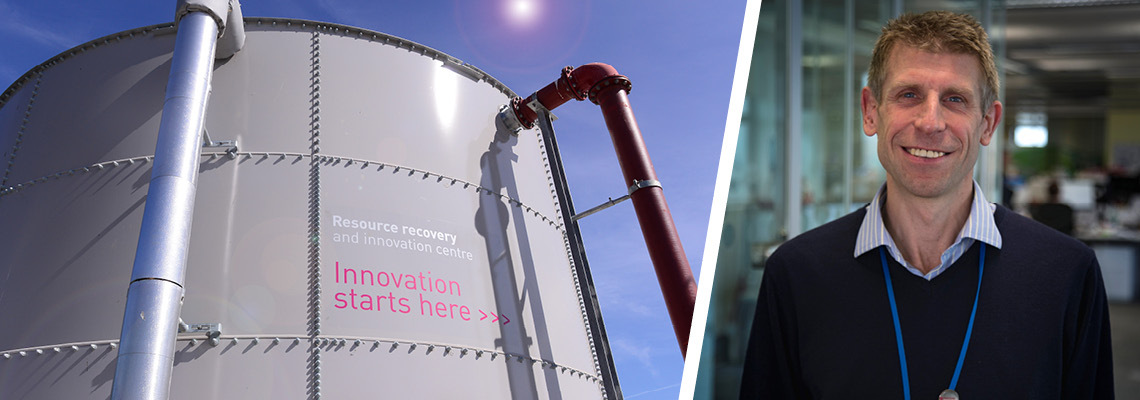AnMBR – the secret to unlock NextGen wastewater treatment?
Severn Trent’s Spernal site has become a testbed to validate innovative technologies, including “Europe's largest” Anaerobic MBR, (AnMBR), process.
Spernal – a testbed for innovative technologies
There’s the potential for a “step-change” in wastewater treatment to become carbon negative, energy positive and a generator of resources.
And the modification of anaerobic processes to deliver lower energy consumption in colder, more variable climates could be one way to get there.
That’s according to Peter Vale, technical lead for innovation at UK utility, Severn Trent (ST).
Developments at the Spernal wastewater treatment plant (WWTP) are part of the water company’s “Triple Carbon Pledge”. This includes to meet net zero emissions, generate 100 per cent energy from renewable sources and operate a 100 per cent electric fleet by 2030.
This is part of a much broader and equally ambitious country-wide pledge from English water companies to reach net zero carbon emission levels by 2030.
As a result, Spernal has become a “testbed” to evaluate and validate a range of innovative technologies, including what is being labelled “Europe's largest” Anaerobic MBR, (AnMBR), process.
Adapting AnMBR for colder climates
Historically used in warmer climates, such as Brazil, anaerobic treatment has been successfully implemented to treat the wastewater from millions.
Severn Trent has been working with partners Cranfield University to see how anaerobic treatment works in more variable climates.
The max flow capacity through the AnMBR unit will be up to 500 m3/day, with it more likely to operate at around 300 m3/day for most of the time.

Testbed: The AnMBR process is popular in warmer climates such as Brazil. Severn Trent is tweaking the process to work in the colder, more variable UK environment.
The key is the addition of the membrane, which Vale said helps to intensify the process and make it work in colder environments. The process allows nutrients to be recovered from the AnMBR effluent that can be used to make high-value fertilizer products.
Furthermore, the ammonia can be used as an “energy store”, either directly used as a fuel or converted to hydrogen. It may even be possible to produce added-value products such as protein, according to the technical lead.
Reducing wastewater’s energy footprint
It’s estimated that 22,000 wastewater treatment plants across Europe consume more than one per cent of the EU’s overall electricity consumption.
Severn Trent operates 1000 wastewater treatment plants serving over four million people.

Severn Trent operates 1000 wastewater treatment plants and spends an average of £15 million per year on energy to run its activated sludge plants.
The utility spends an average of £15 million per year on energy to run its activated sludge plants (the treatment process employed on the larger treatment works), “just blowing bubbles into concrete tanks full of sewage”, said Vale.
Yet times are changing, with Vale continuously asking the question: “Can we build a sewage treatment flowsheet that gives us a truly energy-positive WWTP?”
“What we'd love to be able to do is switch from energy-intensive aerobic treatment to energy neutral, potentially even energy positive, anaerobic treatment,” he added.
Regulatory challenges remain
The Spernal demonstration site is part of the Horizon2020 (H2020) NextGen collaboration that aims to drive the Circular Economy through a wide range of water-embedded resources, including water, energy and materials.
The four-year H2020 project brings together a partnership of 30 organizations to demonstrate technological, business and governance solutions for water in the circular economy.
Christos Makropoulos is a professor at the National Technical University of Athens and a principal scientist at KWR, the coordinating organisation behind NextGen. He is also involved in other H2020 projects, including ULTIMATE, B-Watersmart and Water Mining.
“We have the technology available to create regional resource hubs, but regulatory and governance challenges remain.”
Makropoulos believes the potential is there to turn wastewater plants, such as Spernal, into regional “resource hubs” but regulatory challenges remain.
“We have the technology available to create regional resource hubs, but regulatory and governance challenges remain because we have to connect multiple industries and stakeholders,” he says.
For this to be successful, says Makropoulos, regional networks will need to be established that will mean “rethinking supply chains moving forward”.
Related content
- Route map for Net Zero Carbon spurs climate action
- ReWater: Digitally mapping the resource recovery plant of the future
- Mark van Loosdrecht: Overcoming hurdles to resource recovery from wastewater
Share your water technology stories with us
Do you have an innovation, research results or an other interesting topic you would like to share with the international water technology industry? The Aquatech website and social media channels are a great platform to showcase your stories!
Please contact our Sr Brand Marketing Manager Annelie Koomen.
Are you an Aquatech exhibitor?
Make sure you add your latest press releases to your Company Profile in the Exhibitor Portal for free exposure.
We promise never to send you spam and you can unsubscribe at any time!
